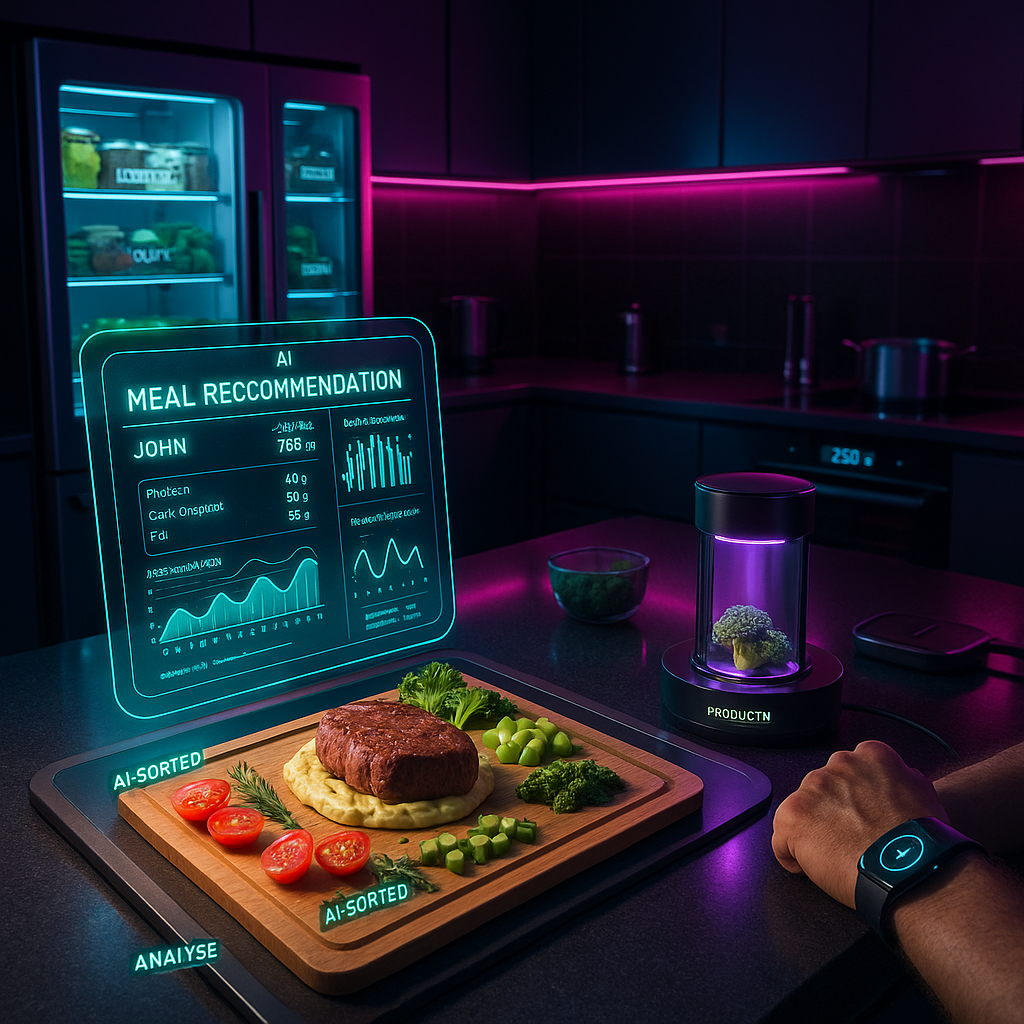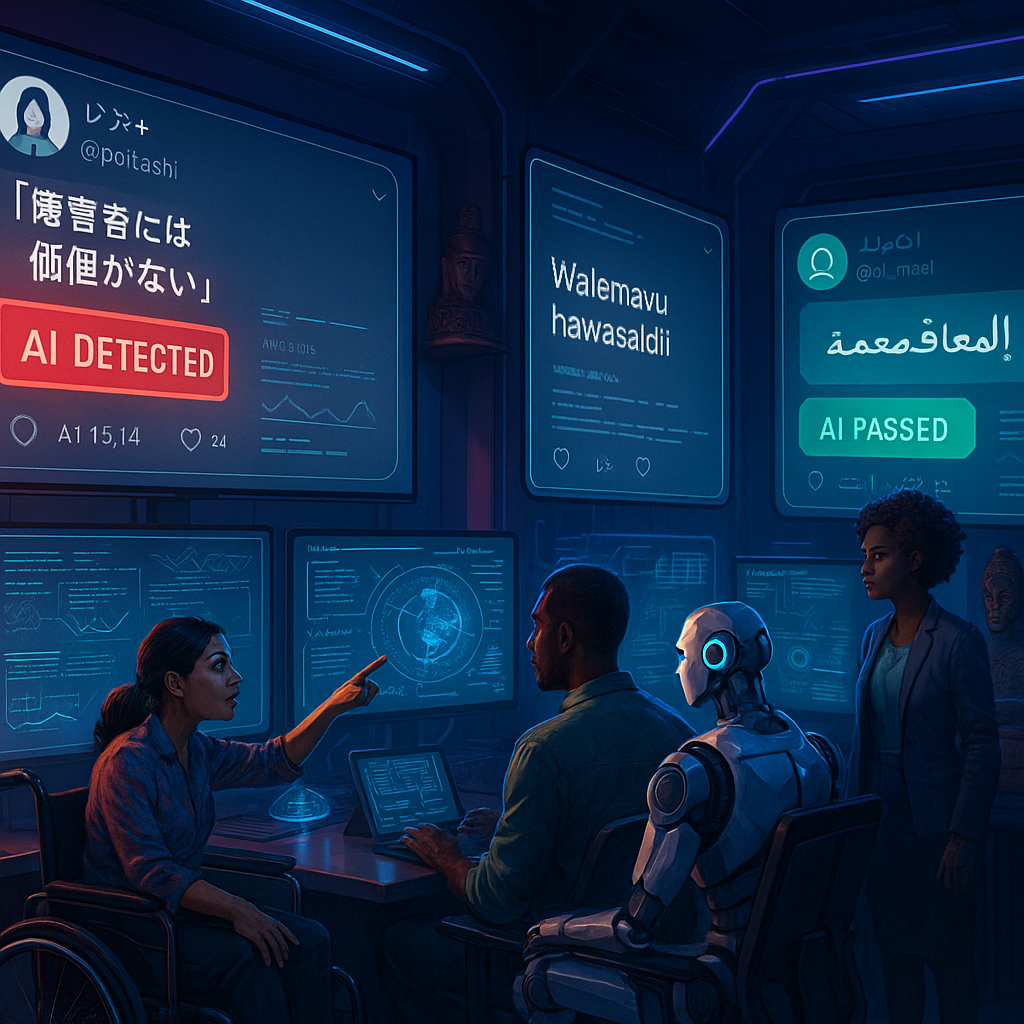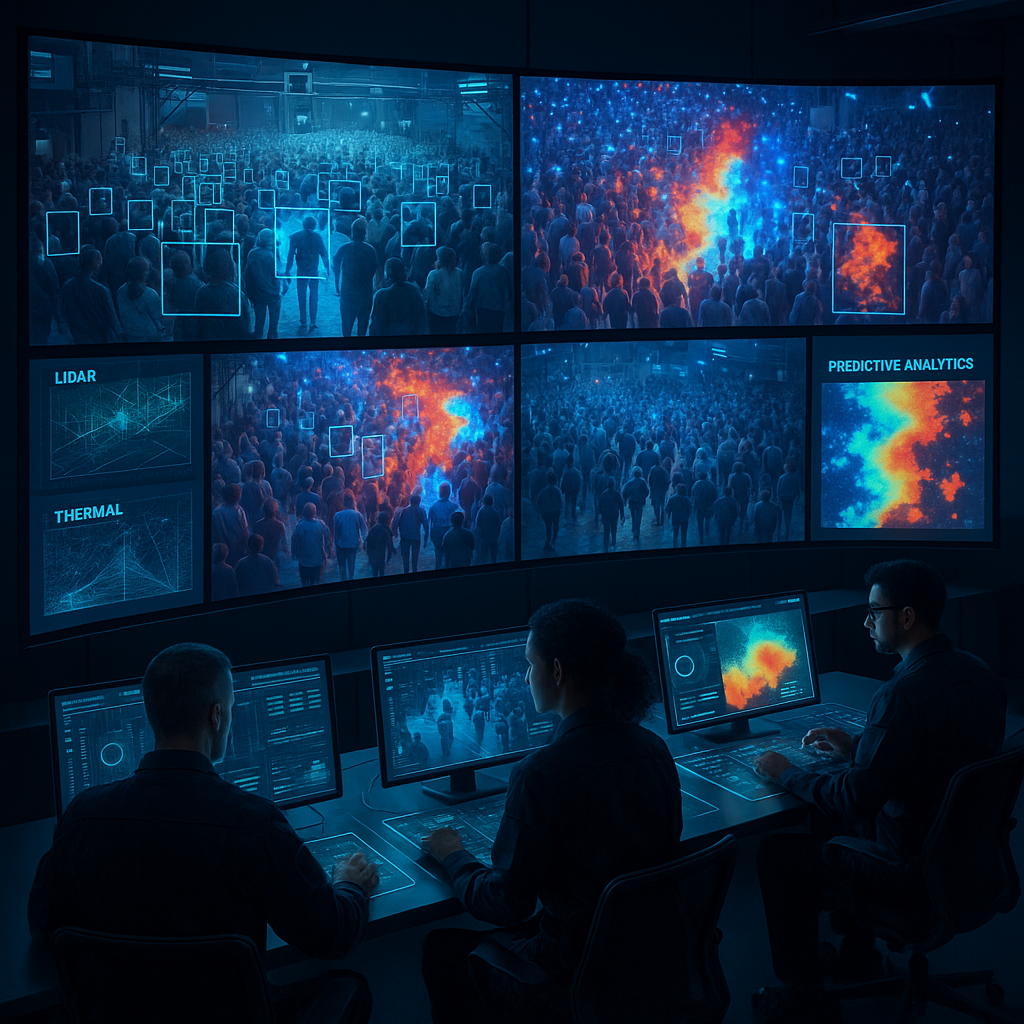Key Takeaways
Food AI is swiftly reshaping what we eat and how those choices reach our plates, moving far beyond traditional nutrition apps and automated recipe generators. The modern AI-powered food revolution stretches across the entire culinary value chain, blending advanced data analytics and culinary artistry to deliver not only hyper-personalized nutrition but also transformative culinary experiences and smarter food manufacturing systems. Here is what defines the AI-powered future of nourishment:
- Precision nutrition is now mainstream thanks to AI. Machine learning algorithms analyze individual health data, eating patterns, and biometric signals, delivering truly individualized meal plans and rendering “one-size-fits-all” diets obsolete.
- AI adapts recipes to every preference and restriction. Sophisticated systems dynamically incorporate cultural traditions, dietary aspirations, and medical limitations, tailoring meals to meet the needs of vegans, keto adherents, allergy sufferers, and everyone in between.
- Meal planning, shopping, and cooking are streamlined by intelligent automation. AI-driven platforms provide step-by-step meal guidance, generate smart grocery lists, and even communicate directly with kitchen appliances for hands-off, perfectly executed cooking on command.
- The power of AI transforms industry far beyond the consumer’s plate. Algorithms now optimize global supply chains, reduce waste, streamline ingredient sourcing, and refine largescale food production. This results in greater efficiency, improved quality, and more sustainable food systems worldwide.
- Holistic change is underway as AI redefines our entire food ecosystem. This is not only about personalizing meals. AI is fundamentally rearchitecting how food is produced, distributed, and tailored, signifying a future where nutrition, technology, and sustainability are inseparable.
- Both consumers and food professionals are empowered. Nutritionists, chefs, food scientists, and everyday eaters are gaining new, actionable insights and creative tools. This democratization of science-backed, enjoyable nutrition brings advanced health and culinary experiences within everyone’s reach.
In the upcoming sections, we will unravel the Food AI revolution, diving into the transformative technologies and strategies that are reinventing personalized nutrition (from the kitchen counter to global value chains in the food sector, retail, healthcare, and beyond).
Introduction
Imagine a kitchen that understands your health needs, recalls your favorite dishes, and recommends precisely tailored meals based on your unique genetic makeup. This isn’t the future as imagined in science fiction. It is already happening, powered by food AI. Advanced systems are now crafting precision nutrition plans by analyzing your biometric data, while smart appliances assist you in preparing custom meals with minimal effort. Every stage of what and how we eat is being intelligently transformed.
The collision of deep data science with culinary creativity dismantles the old rules of nutrition and meal preparation. Rigid diets and monotonous menu planning are giving way to dynamic, AI-driven systems that offer hyper-personalized meal recommendations, accommodate intricate dietary constraints, and even automate tasks like grocery shopping and cooking. The outcome is smarter, healthier eating that is both accessible and delightful.
Stay Sharp. Stay Ahead.
Join our Telegram Channel for exclusive content, real insights,
engage with us and other members and get access to
insider updates, early news and top insights.
 Join the Channel
Join the Channel
Yet this evolution radiates far beyond the individual dining table. Food AI is injecting innovation into every corner of the food industry, from the heart of our homes to the complex machinery of global supply chains and production plants. In the journey that follows, we will explore how personalized nutrition and cooking are just the opening acts in a much larger drama. In this unfolding story, technology, sustainability, and creativity blend to revolutionize our food system as a whole.
The Rise of AI-Powered Nutrition Systems
Technical Infrastructure Behind Personalized Nutrition
At the core of AI-powered nutrition is a sophisticated technical infrastructure built to interpret vast and complex streams of data. Today’s leading personalized nutrition platforms are powered by advanced machine learning architectures, often deploying deep neural networks trained on extensive databases that span nutritional science, genetics, biochemistry, and behavioral patterns. For example, companies such as Nutrino Health utilize databases exceeding 600,000 food items and 500-plus parameters to shape uniquely personalized nutrition profiles.
These platforms rely heavily on multimodal data processing, analyzing everything from biometric sensor input and lab test results to food images and self-reported habits. The typical technical ecosystem includes:
- Computer vision algorithms that recognize food items with over 95% accuracy
- Natural language processing for interpreting recipes and user feedback
- Reinforcement learning to optimize long-term meal planning and adaptation
- Real-time API integrations with wearable fitness trackers and metabolic sensors
Balancing localized edge computing (for privacy and speed) with cloud-based services (for deeper analytics and learning) increases efficiency by up to 40% while ensuring sensitive health data remains protected. These systems establish the backbone for precision nutrition to move from the realm of curiosity to daily experience.
Machine Learning Models in Food Analysis
The power of Food AI emerges most clearly in its unrivaled pattern recognition capabilities. Using ensemble methods that combine the insights of several algorithms, modern platforms are achieving new benchmarks in precision:
- Convolutional Neural Networks (CNNs) reliably identify food from images, attaining 98% accuracy, vital for logging meals effortlessly in healthcare and consumer wellness settings.
- Random Forest models accurately extract nutritional data from ingredient lists, aiding regulatory compliance and supporting users managing chronic conditions.
- Gradient Boosting techniques dynamically adjust meal timing and portion recommendations, optimizing energy levels for athletes, students, and busy professionals alike.
Research from institutions such as MIT’s Food Computing Lab demonstrates that hybrid approaches elevate nutrient estimation accuracy by 35% relative to traditional manual methods. This heightened precision is further amplified as systems learn from continuous streams of user feedback, with some platforms improving their recommendation accuracy by 15% each quarter.
Personalization Algorithms and Adaptation
Personalization is not a static achievement but a dynamic process, achieved through adaptive algorithms that refine their recommendations over time. Food AI systems deploy Bayesian optimization to adjust meal plans, use collaborative filtering to uncover common patterns and preferences across user groups, and employ reinforcement learning to deliver smarter, longer-term dietary strategies.
This capacity for nuanced adaptation translates into dramatically better outcomes. Internal platform studies indicate up to 72% improved adherence to tailored nutrition regimens over static, generic plans. These intelligent systems can detect minute shifts in user habits or physiological signals, often anticipating emerging needs long before users consciously perceive them.
Integration with IoT and Biometric Devices
Food AI systems become significantly more potent when linked with the growing universe of connected devices. Integration spans:
- Smart kitchen appliances (logging up to 2TB of data daily) that adjust cooking parameters for nutrition and flavor
- Wearables that monitor metabolic rates, blood glucose, and other biomarkers, providing real-time feedback
- Intelligent scales and portion management systems that guide healthy serving sizes in homes, restaurants, and hospitals
- Automated inventory and grocery systems that streamline supply management, minimizing waste for families and businesses
These hyper-connected ecosystems represent a new standard in responsive nutrition. For example, using data from wearables, some platforms have achieved 60% better meal timing optimization. This connectivity extends into sectors such as healthcare (personalized hospital meal programs), eldercare (nutrient monitoring for at-risk populations), and athletic training facilities (performance-tuned meal scheduling).
Data Security and Privacy Architecture
As AI becomes intimately involved with our health and lifestyle data, the integrity and security of this information rise to paramount importance. Current Food AI platforms employ robust data protection strategies, including:
- End-to-end encryption to shield personal and biometric data from unauthorized access
- Federated learning models that enable collaborative improvements in AI without centralizing private user data
- Granular permission controls, empowering users to manage who accesses their information
- Full compliance with regulatory frameworks such as HIPAA and GDPR
This architecture builds trust and enables the safe advancement of personalized nutrition. Industry figures reveal a 99.99% data protection success rate, with most learning improvements achieved from aggregated, anonymized datasets. The lesson is clear: innovation need not sacrifice privacy.
Future Technical Developments
Tomorrow’s Food AI systems are being shaped by emerging technologies that promise even greater breakthroughs:
- Quantum computing is entering pilot stages, accelerating analyses of complex nutrition-genomics interactions and enabling previously infeasible calculations for deeply individualized plans.
- Genomic data integration unlocks “true” personalized nutrition by matching dietary guidance to the genetic level, with major implications for chronic disease prevention and athletic optimization.
- Blockchain-backed transparency empowers stakeholders, from farmers to consumers, with verifiable records of sourcing, ingredient provenance, and supply-chain sustainability.
- Augmented reality (AR) transforms the user interface, with interactive cooking guidance and nutrition education directly embedded in the kitchen environment.
Early adopters in food manufacturing are also leveraging AI to automate quality control, optimize resource allocation in large-scale production, and dramatically reduce food waste. This serves not just consumer wellness but environmental sustainability in retail, agriculture, and supply chain management.
Conclusion
AI-driven nutrition has decisively moved beyond the days of generic advice and shallow app-generated suggestions. Today, deeply personalized and continuously adapting platforms anticipate our needs, encourage positive health outcomes, and transform the relationship individuals have with what they eat. The synergy with IoT devices powers a data-rich ecosystem where feedback, adjustment, and optimization are seamlessly ongoing, whether you are a home cook, professional chef, nutritionist, or supply chain manager.
At every level, this transformation is grounded in rigorous privacy protections and propelled by sophisticated technical architectures that span machine learning, edge computing, and real-time analytics. With the accelerated rise of quantum computing, genomic analysis, and reality-bending interfaces, the boundaries of what’s possible in food AI continue to expand.
Stay Sharp. Stay Ahead.
Join our Telegram Channel for exclusive content, real insights,
engage with us and other members and get access to
insider updates, early news and top insights.
 Join the Channel
Join the Channel
Looking toward the future, the integration of AI into every facet of our food system invites both opportunity and responsibility. The ambitious promise is not just to nourish bodies, but to cultivate minds. Bridging the gap between biological need, cultural tradition, technological innovation, and sustainability is a challenge we can’t ignore. The real challenge is not if AI will reshape our food landscapes, but how boldly and thoughtfully we will leverage its power across industries and lives. Those who harness these advancements with creativity and ethical clarity will set new standards for both personal and planetary wellbeing, making the next era of food not just smarter, but profoundly more human.





Leave a Reply